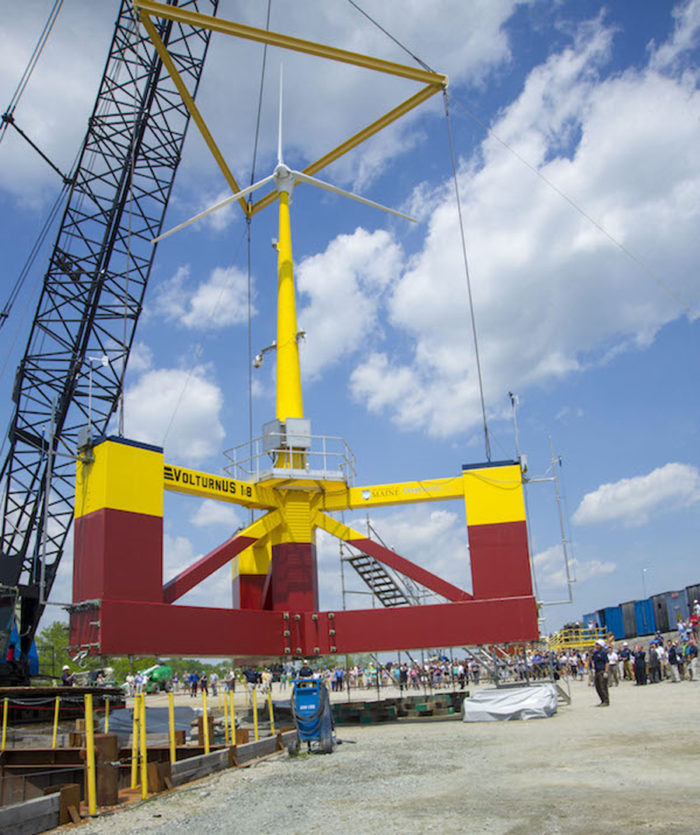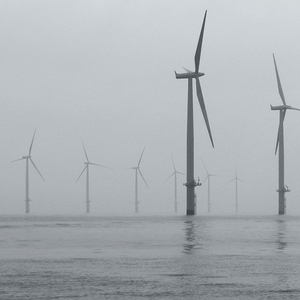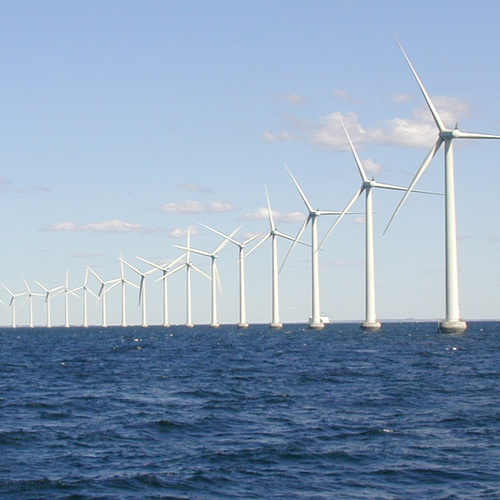
Image Credit: Maine Aqua Ventus
Pilot projects designed to test three different approaches to anchoring offshore wind turbines have won backing from the U.S. Department of Energy (DOE), making each eligible for as much as $40 million in new funding.
In an announcement, the department said that projects in Maine, on Lake Erie and in the Atlantic Ocean off Atlantic City, New Jersey, all show “significant progress toward being successfully completed and producing power.”
Offshore wind has a 25-year history in Europe but has been slow to succeed in the U.S. A project off the southern New England coast called the Block Island Wind Farm finished installing five foundations late last year and is scheduled to put its turbines online sometime this year, according to the website of Deepwater Wind. Yet at the moment, there are no operating offshore wind farms anywhere in the country.
Each of the three projects named in the latest DOE funding announcement are a little different. Two of them — the projects in Lake Erie and off the New Jersey coast — will test new ways of anchoring turbine towers to the seabed. The Maine project, which already has been successfully tested with a 1:8 scale model, uses a semi-submersible design for deepwater installations where turbines will be tethered to the ocean floor but not connected directly.
Maine project developed by university researchers
The Maine project is important because turbines can be deployed in water too deep for conventionally anchored platforms. Designed at the University of Maine’s Advanced Structures and Composites Center in Orono, the VolturnUS , as it’s called, is a semi-submersible concrete hull with a composite superstructure.
A one-eighth scale model of what will be the New England Aqua Ventus I project was tested for nearly 18 months near Castine, Maine, and became the first offshore turbine connected to the grid in the Americas, according to the website of Maine Aqua Ventus, the spinoff company that is developing the project. It was removed from the water late in 2014 after university researchers had a chance to test the design.
The university, which has several partners in the project, hopes to install two 6-megawatt turbines off Monhegan Island.
The Bangor Daily News reported that the money will allow the consortium to push ahead with construction of the two full-sized turbines, and then attract private investment in a larger wind farm.
The latest DOE announcement represents a welcome reversal of fortunes for Maine wind. In 2011, the Norwegian energy giant Statoil had a deal mapped out with the Maine Public Utilities Commission for providing offshore wind after responding to a request for proposal. But an intervention from Governor Paul LePage forced the PUC to give the University of Maine project get another chance, and Statoil dropped out of the running.
Habib Dagher, director of the Advanced Structures and Composites Center, told The Bangor Daily News earlier that there is the potential for 150 gigawatts of offshore wind energy off the coast, 70 times the energy the state of Maine consumes.
Projects in New Jersey and Lake Erie
Fishermen’s Energy of New Jersey hopes to install six 4-MW turbines about three miles off the coast at Atlantic City in relatively shallow water to test what’s called a “twisted jacket” foundation. Legs of the supporting structure are angled around a central column, according to DOE, in a design that is easier to manufacture and install than competitive designs.
It includes an access ladder that makes it safer for workers to get aboard a support vessel that’s riding up and down in the waves, according to the DOE.
Seven miles off the coast of Cleveland, Ohio, in Lake Erie, LEEDCo will install six turbines, each with a capacity of 3.45 MW, on “Mono Bucket” foundations.
This is another design that promises lower installation costs and environmental impact compared with foundations that require piles be driven into the lakebed. A giant steel bucket is lowered from a barge and set, open side down, on the bottom of the lake, an article at Modern Metals explains. Once water is pumped out of the bucket, a combination of gravity and water pressure forces the steel structure into the lakebed.
Buckets would be up to 52 feet in diameter, and designed to penetrate the lake bed by as much as 40 feet. The design is intended for sites with soft sediment layers over bedrock where traditional monopiles wouldn’t work well or would be environmentally disruptive, Modern Metals said.
Water at the proposed site is only about 60 feet deep. Reversing the operation and pumping water back into the bucket allows the foundation to be moved.
Not everyone is a winner
The news from DOE wasn’t good for everyone. While the three new projects are being nudged ahead, Dominion Virginia Power lost $40 million in government grants that would have helped pay for two 6-MW turbines, according to a post at UtilityDive.
The utility wasn’t able to guarantee that the turbines would be finished by 2020, and Dominion also faced cost and regulatory challenges, UtilityDive said.
Dominion had estimated that the turbines could be built for $230 million, but an initial round of bids from developers came in at between $375 million and $400 million; a second round of bidding dropped the cost only marginally.
“Naturally, we are disappointed in the DOE’s decision because we still believe that offshore wind has a great potential to deliver clean, renewable energy to Virginia,” Mary C. Doswell, senior vice president at Dominion Energy Solutions, said in a statement. “However, we also recognize the unique regulatory and cost challenges involved in our project and appreciate the DOE’s desire to support other projects that may have an earlier opportunity for fruition.”
Weekly Newsletter
Get building science and energy efficiency advice, plus special offers, in your inbox.















0 Comments
Log in or create an account to post a comment.
Sign up Log in